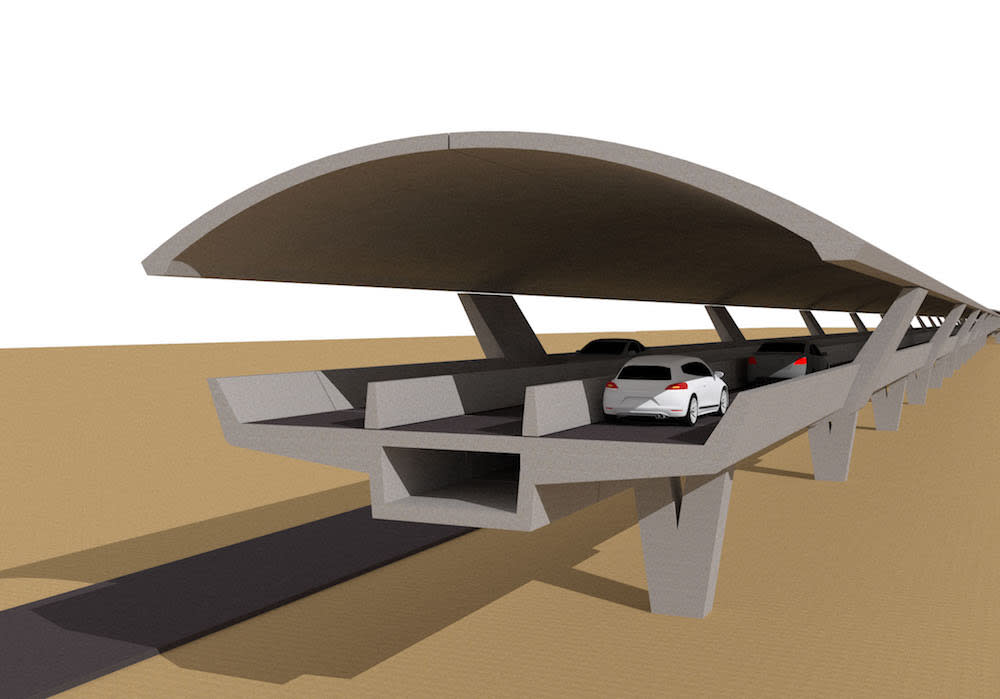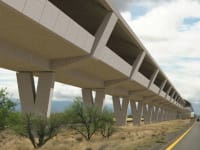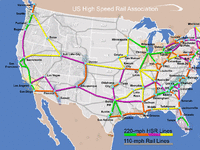A new high-speed mass-transit system for self-driving electric cars could offer travelers an alternative that would reduce highway congestion, accidents, and air pollution yet let passengers keep the security and privacy of traveling in a private car. Platooning cars into high-speed, traveling groups, away from manually driven cars in their own roadway channel would protect the high-speed travels from other traffic and provide a means of powering the electric cars while they are moving. Solar panels on the roof over the high-speed channel would create a weather protected roadway and supply the needed electrical power.
Charging users a toll for use of the roadway and for the electrical power used could generate enough money to pay-back the investment and become a new source of tax revenue. If the toll was just 18 cents per mile, the electric fee was 12.3 cents per mile, and the vehicle rental was 12.7 cents per mile then travel fees would be just 43 cents per mile, where gas at $4.50 a gallon it would cost 22.2 cents per mile to travel by car. A speed of 140 mph would cut travel time in half. A trip from New York City to Washington DC currently takes 4 hrs. 55 min. by car on I-95, by Amtrak Regional 3 hrs. 40 min. with a fare of $123.00, by Jet Blue 1 hr. 15 min. with a fare of $119.00. A trip on the new system by electric car would be 1 hr. 39 min. with a cost of just $98.94 for the vehicle not per passenger.
The new mass transit system for electric cars would therefore be much faster than driving or traveling by train and faster than flying if you consider the time going to the airport and the time spent in the airport. Traveling in a private car whenever you want in self-driving mode during the high speed trip and having the same vehicle when you get there and travel faster and less expensive than other modes, should make it the travel mode of choice.
Very high usage could be expected along high traffic corridors, as with example above. The 230 mile route would have stations every 5 miles picking up both local and long distance commute traffic. An average trip length of 25 miles and 60% of existing highway traffic would generate a tax revenue of $1.249 Billion annually. A $10,000 dollar investment in building the public/private grade separated toll roadway would return $2,235.00 annually in this example.
A Patent covers the technology to manage and control platoons of high-speed vehicles.
Like this entry?
-
About the Entrant
- Name:Jim Beregi
- Type of entry:individual
- Patent status:patented








